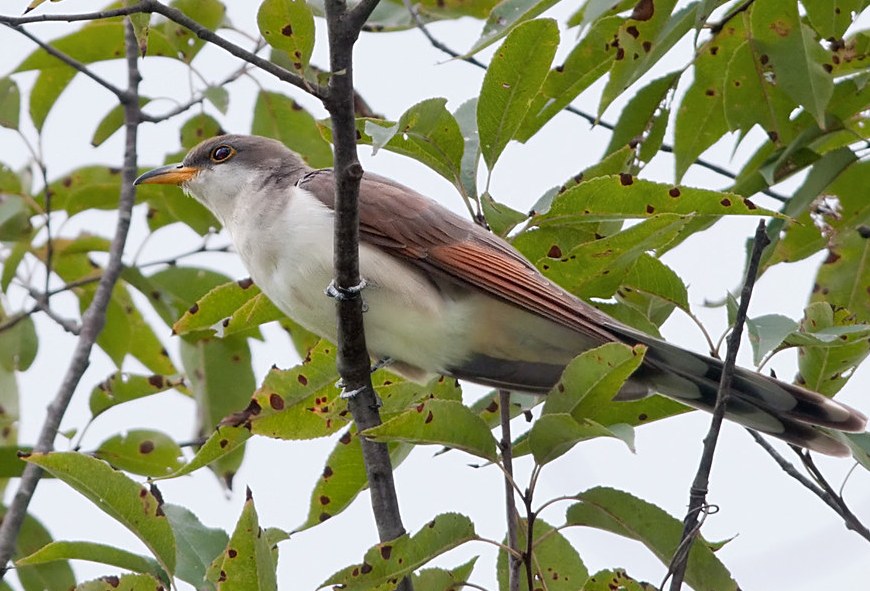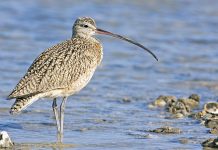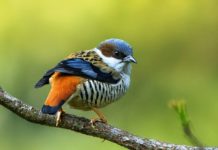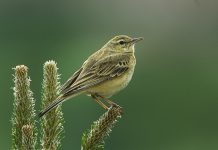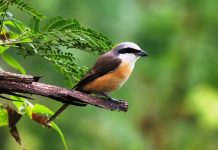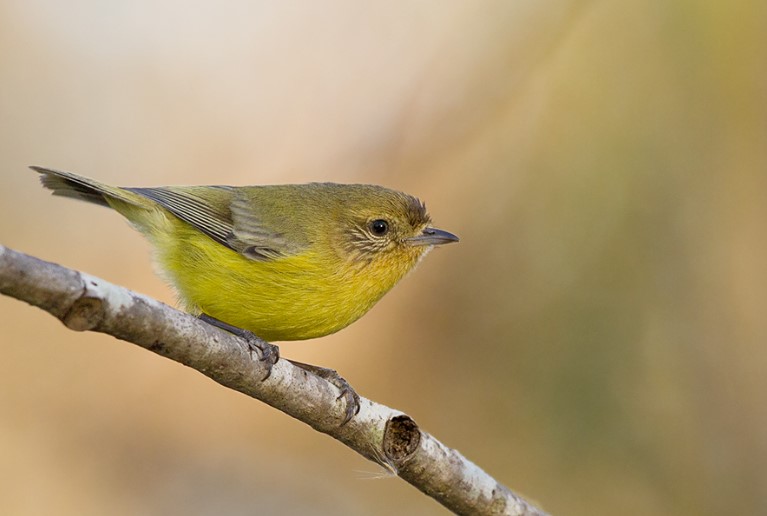Male Yellow-billed Cuckoo call is a distinguishing series of hollow, wooden-sounding ka-ka-ka-ka-ka-ka-ka-kow-kow-kow-kow-kowlp-kowlp-kowlp-kowlp-kowlp syllables. The entire series is a bit slow and then gets sluggish towards the final.
The yellow-billed cuckoo sound can last for 8–10 minutes. Sometimes it sounds like sound of a car engine attempting to rotate before roaring into existence. For a long time, scientists were able to recognize these snarling gulps as well as hollow hoots as the precursor to more impressive. Cuckoos typically appear in the early part of April and will sing until May. In June, the middle cuckoo’s song is not heard as much, and then in July, it takes off.
Female cuckoos have the most raucous chuckle, however, the male cuckoo’s sound is very familiar, and it is unlikely to hear it until it ceases to sing at the point that it disappears from its singing post. Yellow-billed cuckoos remain elusive and are not seen, despite their distinctive guttural calls, and are becoming increasingly scarce birds that depend on huge areas of native forests throughout The American West.
The yellow-billed cuckoo (Coccyzus americanus) is common and called rain crow and storm crow in the Southern United States. The name refers to the cuckoo’s habit of calling on hot days, often presaging rain or thunderstorms. The ancient Greeks knew this bird as Kokkuzo; they elaborated the call like a common cuckoo, and Americana means “of America.”.
Adults have a tail that is long, brown on top and black-and-white beneath, and a black curving bill, with yellow around the lower part of the mandible. The head and upper part are brown, while the lower part is white. There is a yellow band in the middle of the eye. It displays cinnamon on the wings while flying. The young birds look similar, but the black undertail is replaced with grey. The breeding habits of yellow-billed cuckoo are deciduous woods from southern Canada to Mexico and the West Indies Islands. These cuckoos migrate to Central America, and as far south as northern Argentina. This bird is a rare vagrant in Western Europe.
They forge among dense trees and shrubs as well as capture insects during flight. They are primarily fond of insects, including caterpillars in tents and cicadas; however, they also eat insects, eggs of other birds, and berries. Cuckoos may gather in close proximity to the scene of an outbreak or emergency and can be seen in the form of instances of exotic Gypsy Moth caterpillars. The yellow-billed cuckoo builds a nest in a tree or shrub, usually up to two to twelve feet above the ground.
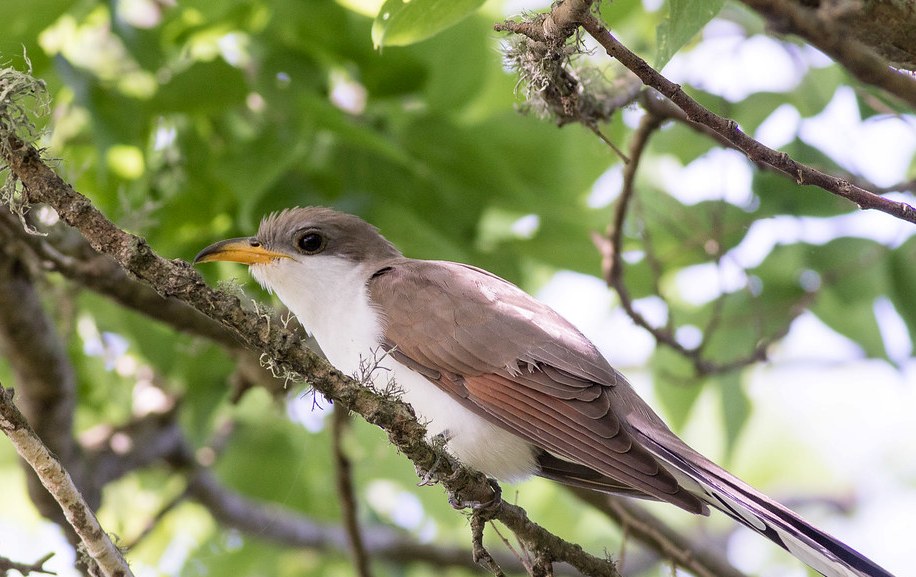
The flimsy nest is made with short twigs placed on a horizontal branch. Normally, the clutch contains three to four eggs, which are incubated for two weeks or less. The baby bird is able to climb about with agility at 8 to 9 days of age. At about this same time, the feathers of the baby birds burst out of their sheaths and the young are able to fly. The entire time from egg-laying to fledging may be as little as 17–18 days. It has also been observed that yellow-billed cuckoos infrequently lay eggs in the nests of other birds (mainly regularly the closely related black-billed cuckoo), but they do not necessitate brood parasites of other birds as is the common cuckoo of Eurasia.
Read More: Song of American Robin
